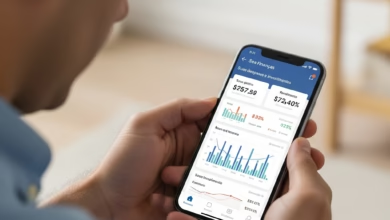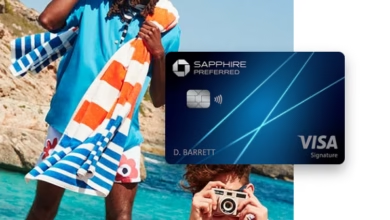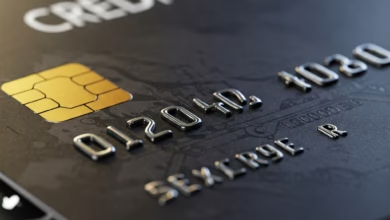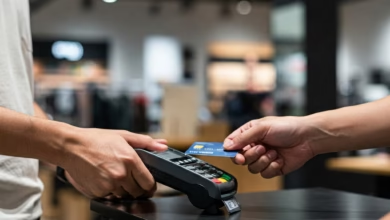What is a secured credit card and how does it work?
Learn how the secured credit card works
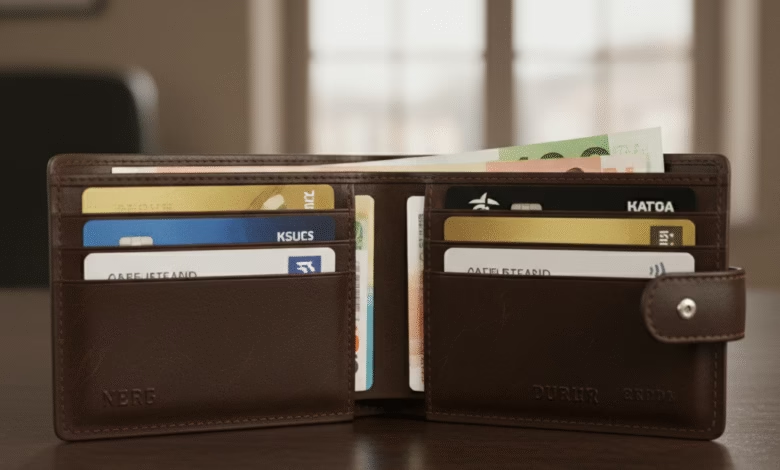
It’s one of the most frustrating paradoxes in personal finance: you can’t get credit until you have credit. If you’re a young adult just starting, a newcomer to the country, or someone recovering from past financial mistakes, you’ve likely hit this wall. You apply for a standard credit card—a simple tool for booking a hotel or building a credit history—and you’re met with a rejection letter.
So, how do you break the cycle? How do you prove you’re creditworthy when no one will give you the chance?
The answer, for millions of Americans, is the secured credit card.
This isn’t a debit card, and it’s not a “prepaid” card. It’s a real, fully-functioning credit card with one key difference that makes it the single most powerful tool for building or rebuilding a credit profile from scratch.
In this ultimate guide, we’ll cover exactly what a secured card is, how it works, who it’s for, and the step-by-step strategy to use one to build an excellent credit score.
What Is a Secured Credit Card, Anyway?

A secured credit card is a type of credit card that is “secured” by a cash deposit you make upfront. This deposit is collateral. It acts as a safety net for the bank (the card issuer).
Think of it this way:
- An unsecured card (the “normal” kind) is based on trust. The bank reviews your FICO score and credit history and “trusts” that you’ll pay them back. Your good credit history is the only thing securing the loan.
- A secured card is based on collateral. The bank doesn’t know you or trust your credit history (or you don’t have one). So, you provide a cash deposit. If you fail to pay your bill, the bank can take your deposit to cover its losses.
This deposit removes almost all the risk for the bank, which is why they are willing to issue these cards to people with bad credit or no credit at all.
This is its entire purpose: to give people a path to prove their creditworthiness.
How Secured Credit Cards Work: The Step-by-Step Process
This is where most people get confused, so let’s break it down. The most important thing to know is this: Your deposit is NOT used to pay your monthly bill. It’s simply held by the bank as insurance.
Here is the exact lifecycle of a secured card:
1. The Application and Deposit
You apply for the card just like any other. The issuer will still pull your credit (if you have any) and check your identity. They primarily want to see if you have any active, recent bankruptcies or a stable enough income to make payments.
Once approved, you must pay the security deposit.
- How much? The typical minimum deposit is $200, but some cards allow more (e.g., $500, $1,000, or even $2,500).
- What does this determine? Your deposit almost always becomes your credit limit. If you deposit $300, your credit limit will be $300. This low limit is intentional. It’s a training tool, not a way to finance a vacation.
2. Using the Card
Once you’re funded and approved, you’ll receive a physical credit card in the mail. It will have a Visa or Mastercard logo on it.
From this point on, it works exactly like a regular, unsecured credit card.
- You can use it to buy gas, groceries, or shop online.
- You can use it to rent a car or book a hotel (which often require a “credit card” on file, not a debit card).
- No one—not the cashier, not the website—knows it’s a secured card. It looks and functions just like any other card.
3. Paying Your Monthly Bill
At the end of your 30-day billing cycle, the bank will send you a statement. It will show your purchases and list a minimum payment due.
This is the most critical step:
- You must pay this bill, either in full or at least the minimum, from your checking account.
- Again, the bank does not take the payment from your security deposit. Your deposit just sits in a separate, locked savings account.
- If you don’t pay your bill, you will be charged interest (APRs are often high on secured cards) and a late fee.
4. Building Your Credit History
This is the magic. This is the entire point of the card.
Each month, the secured card issuer will report your payment behavior to the three major credit bureaus: Equifax, Experian, and TransUnion.
When you pay your bill on time, the bureaus get a report that says, “This person made a payment as agreed.” This adds a positive “on-time payment” to your credit history—the single most important factor (35%) in your FICO score.
After a few months, you’ll have a record of positive payments. After six months, you’ll have a FICO score (if you didn’t have one before) or you’ll see your existing score begin to climb.
Secured Card vs. Unsecured Card vs. Debit Card: Key Differences
It’s easy to confuse these products, but they are fundamentally different. A secured card is a credit-building tool, a debit card is a cash-spending tool, and an unsecured card is a loan.
Here’s a simple breakdown:
| Feature | Secured Credit Card | Unsecured Credit Card | Debit Card |
| How It’s Funded | Requires a refundable cash deposit as collateral. | Based on your creditworthiness (trust). No deposit. | Linked directly to your checking account. |
| Credit Limit | Yes. Usually equal to your deposit (e.g., $200 – $500). | Yes. Based on your income and credit score (e.g., $5,000+). | No “credit limit.” You can only spend what’s in your bank account. |
| Builds Credit? | Yes. This is its primary purpose. Reports to credit bureaus. | Yes. This is a standard credit card. | No. Does not build credit history at all. |
| Primary Use | To build or rebuild a credit history. | Convenience, rewards, and short-term financing. | To spend your own money from your checking account. |
| Interest (APR) | Yes. If you carry a balance, you will be charged interest. | Yes. If you carry a balance, you will be charged interest. | No. It’s your money, so you can’t be charged interest. |
The biggest takeaway: A debit card and a prepaid card do nothing for your credit score. If your goal is to build credit, they are useless. A secured card is the only one designed for this job.
Who Should Get a Secured Credit Card?
This card isn’t for everyone, but for two specific groups, it’s the perfect solution.
1. The “Credit Newbie”
This is anyone who has no credit history, often called “credit invisible.”
- Students: A college student over 18 who has no credit in their own name.
- Young Adults: Anyone just starting their career who has never had a loan or credit card.
- Immigrants/Newcomers: Individuals who are new to the U.S. financial system, as credit history does not transfer between countries.
For this group, a secured card is a “learner’s permit” for credit. It’s a safe, low-risk way to learn the habits of paying a monthly bill and establish a FICO score from scratch.
2. The “Credit Rebuilder”
This is anyone who has a damaged credit history.
- Post-Bankruptcy: You’ve had your debts discharged, but your credit score is in the tank and you need to start over.
- History of Defaults: You’ve had accounts go to collections or have charge-offs in your past.
- Poor Payment History: You’ve missed payments on student loans, auto loans, or other cards.
For this group, a secured card is a “second chance.” Because of the deposit, lenders are willing to give you a card even when your past is rocky. It’s your one and only way to prove you’re now responsible, by adding a new, positive line of on-time payments to your report.
The Most Important Feature: Does It Report to All Three Credit Bureaus?
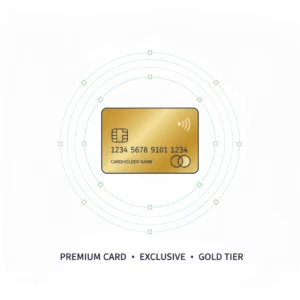
This is the non-negotiable, must-have feature. If you are shopping for a secured card, this is the only question that truly matters.
If the card does not report your activity to Equifax, Experian, AND TransUnion, it is useless for building credit.
Some “predatory” cards or “fee-harvester” cards will happily take your deposit and fees but won’t actually report your good behavior. You must read the fine print and ensure the issuer clearly states, “We report to all three major credit bureaus.”
Without this, you’re just paying for an expensive, low-limit debit card.
Understanding the Security Deposit: Your Top Questions Answered
The deposit is the heart of the secured card. Let’s clear up the biggest questions about it.
Is my security deposit safe?
Yes. The bank or card issuer holds your deposit in a separate, often interest-bearing, savings account. If the issuer is an FDIC-insured bank (which most are), your deposit is protected just like any other bank account, up to $250,000.
Can I lose my security deposit?
Yes, but only if you fail to pay your bill.
This is what “collateral” means. If you rack up a $200 balance on your $200 deposit card and then “ghost” the bank—stop answering calls and never make a payment for several months—the bank will eventually close your account. They will deem your debt “charged-off” and use your $200 deposit to pay themselves back.
You will have lost your deposit, and your credit report will be severely damaged by the charge-off and missed payments. This is the worst-case scenario.
Do I get my security deposit back? (Yes!)
This is the best part. The deposit is 100% refundable. You get it back in one of two ways:
- You close the account. If you decide you’re done with the card, you simply pay your balance down to $0 and call the bank to close the account. They will mail you a check for your full security deposit.
- You “Graduate” to an unsecured card. This is the goal.
The Goal: “Graduating” From a Secured to an Unsecured Card
The secured card is not meant to be in your wallet forever. It’s a “training” card. The entire goal is to “graduate” to a regular, unsecured credit card.
What is graduation?
Graduation is when the bank has seen you make enough on-time payments (usually 6 to 12 in a row) that they no longer consider you a risk.
They will automatically review your account and decide you’ve “earned” their trust. At this point:
- They will refund your full security deposit (usually as a check or a statement credit).
- They will convert your card into a regular, unsecured credit card.
- They will often increase your credit limit (e.g., from $300 to $1,500 or $2,000).
You now have a “real” credit card, you have your money back, and you have a positive credit history. You’ve won.
How to Use a Secured Card to Maximize Your Credit Score

Just having a secured card isn’t enough. You have to use it correctly. If you follow these three rules, you will build credit as fast as humanly possible.
1. Pay Your Bill On Time, Every Time. (No Exceptions)
This is the golden rule. Your payment history is 35% of your FICO score. One 30-day late payment can devastate a new credit profile and set you back months. Set up automatic payments for at least the minimum amount. Never, ever miss a payment.
2. Keep Your Credit Utilization Ratio (CUR) Incredibly Low
This is the “advanced” trick that separates fast-builders from slow-builders.
- Credit Utilization is the second-biggest factor in your score (30%). It’s the percentage of your limit that you’re using.
- The Trap: Because your limit is tiny (e.g., $300), it’s dangerously easy to have high utilization.
- Example: You have a $300 limit. You buy $150 worth of groceries. You are now at 50% utilization, which FICO sees as a high risk and will lower your score.
The Solution:
To build your score fast, you must keep your reported balance under 10% of your limit. On a $300 card, that’s a balance of just $30.
3. The “One-Two Punch” Payment Strategy
This follows from Rule #2. How do you keep your balance low if you need to use the card?
Simple: Pay your bill before the statement closes.
- Use your card for a small, recurring purchase (like a $15 Netflix bill).
- Let the bill post to your account.
- A few days before your statement’s “closing date,” log in and pay that $15 off.
- Your statement will “close” with a tiny balance (or $0) and report that to the credit bureaus.
This strategy proves you’re using the card (which is good) and paying it off (which is great), all while keeping your utilization at rock bottom.
What to Look for (and Avoid) When Choosing a Secured Card
Not all secured cards are created equal. Since your goal is to graduate, you want a card that makes it easy.
What to Look For:
- No Annual Fee: There are many excellent secured cards with a $0 annual fee. There’s no reason to pay one.
- Reports to All 3 Bureaus: As mentioned, this is non-negotiable.
- Clear “Graduation” Path: Look for issuers (like Discover or Capital One) that are famous for their automatic account reviews and graduation programs.
- Low Minimum Deposit: A $200 minimum is standard and accessible.
What to Avoid:
- Annual Fees: Why pay $49/year for a card you’re only trying to use for 12 months?
- “Application” Fees or “Processing” Fees: These are red flags of a predatory card. You should never have to pay just to apply.
- Monthly “Maintenance” Fees: Another red flag.
- No Graduation Path: Some cards are designed to keep you as a secured-card customer and keep your deposit. Avoid these.
Is a Secured Credit Card Worth It? The Final Verdict

Let’s be clear: a secured credit card is not a “great” card. It has a low limit, few (if any) rewards, and a high APR.
But it’s not supposed to be a great card.
It is a tool. It’s a stepping stone. It’s the key that unlocks the door to the entire credit ecosystem.
For a small, refundable deposit of a few hundred dollars, you are buying a ticket to a better financial future. You’re buying a FICO score, which will one day give you access to a good apartment, a reasonable auto loan, or a mortgage with a low-interest rate.
If you are starting from zero or starting over, a secured credit card isn’t just “worth it”—it is, without a doubt, the single best and most effective way to begin.

